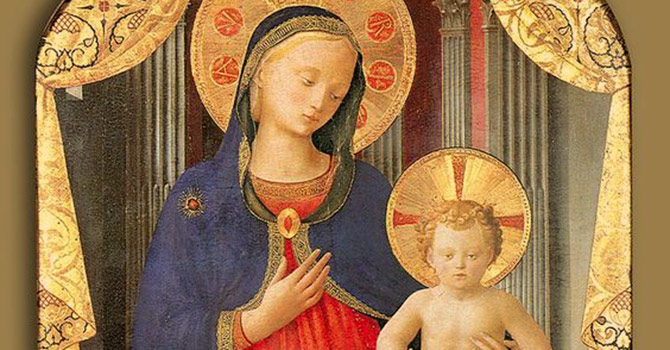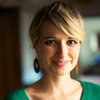Artist Makoto Fujimura describes visiting the Fra Angelico (1395-1455) exhibit at the Met one December. As he gazed at Angelico’s “Madonna and Child,” he says he had to close his eyes. What he saw on the canvas was so powerful that he felt overwhelmed, so that he physically staggered.
In his book “Refractions: A Journey of Faith, Art and Culture,” Fujimura writes that as he gazed at the painting, the “five-hundred-year question” popped into his mind.
“What is the five-hundred-year question?” he writes. “Well, it’s a long-term, historical look at the reality of our cultures that asks, What ideas, what art, what vision in our current culture has the capacity to affect humanity for more than five hundred years? ... If our decisions matter and make ripple effects in the world, then should we not weigh what we say and do in light of the five-hundred-year question?”
Many of us know the company Seventh Generation, whose plant-based household products take their inspiration from the indigenous tribal wisdom that every decision made should be considered in light of its effect on seven generations hence. But 500 years from now? That seems harder to get our minds around.
In addition to this unusual timeline, Fujimura acknowledges our fragile place in the world today, noting that future-oriented thinking has been clouded by our “capacity to blow ourselves up a thousand times over.” Apocalyptic movies and literature witness to a mood of despair in which there is no future. Many millennials are deciding not to have children.
Yet the power of Fra Angelico’s vibrant and luminous “Madonna and Child” endures.
Fujimura notes that the artist learned his craft in the church. At 20, Angelico entered the Dominican order, which trained him as an artist’s apprentice, recognizing and cultivating his great gifts. Were he alive today, Angelico likely would have to find a different path. “The church is not the first place a creative genius would look to be trained in art,” Fujimura notes.
Ouch.
And it’s not that the artist lived in happier times; Europe was devastated by the Black Death, hunger, political assassinations and a church in turmoil. Yet Angelico’s “Madonna and Child” reflects a hope and a faith that still illuminate and empower the Christian message, centuries later, and cause at least one viewer to stagger.
Have we lost our ability to ask questions of longevity? The five-hundred-year question is “the opposite of the Warholian ‘fifteen minutes of fame,’” Fujimura writes. “It’s also a question I raise to my teenagers, whose culture celebrates immediate gratification, also seeking after ‘fifteen minutes of fame.’”
This Christmas, what are we as church and church leaders painting, praying, preaching, proclaiming or prophesying that will endure or inspire for another 500 years? Are we conveying the hope of the Christ child that keeps us alive despite the darkness that threatens to overwhelm us?
And how are we modeling for the young what enduring hope looks like in difficult days of violence, flood, fire, famine, political turmoil and anxiety? What images of our faith are we painting that will cause the young to stagger in awe? And what church programs are we leading that will train our young people to become the creative geniuses God intended them to be?
For inspiration, we can look to programs such as Mowtown, a lawn care company created by the Rev. Matt Overton that offers the youth of Columbia Presbyterian Church in Vancouver, Washington, a chance to engage in social enterprise and learn life and job skills through the church.
“What I’m offering is a process that [invites] them to engage fully, in a way that treats them equally, gives them more dignity,” Overton said. “I want kids and young adults to leave Mowtown knowing what their gifts and talents are, how to hold down a job, and knowing what they’re good at. … Maybe they’ll respond in faith, or maybe not, but at least I’ve blessed those teens’ lives with the ability to sustain themselves. The culture around us values security and job experience for their kids, and I want to provide an environment where we do that with grace and love.”
Mowtown does what L. Gregory Jones calls “overinvesting in the young.” When we overinvest in the young, we proclaim our hope in the future. We train and educate young people to envision a stronger future, supported by the church.
Poet Lucille Clifton, like Fra Angelico, offers us a glimpse into the young Mary. In Clifton’s poem “mary’s dream,” Mary considers carefully the angels’ message to her:
winged women was saying
“full of grace” and like.
was light beyond sun and words
of a name and a blessing.
winged women to only i.
i joined them, whispering
yes.
Mary’s affirming “yes” in the poem, like the luminous image in “Madonna and Child,” witnesses to an enduring faith. “The arts are a cup that will carry the water of life to the thirsty,” Fujimura says. “It’s not the water itself; it’s the vessel.”
For those of us who don’t paint like Angelico or write like Clifton, we witness to our faith when we do our daily, embodied work faithfully and well. When we plant bulbs, care for the sick, plan a reunion, create rich compost, make space in the refrigerator, vote carefully, attend a school board meeting, and rise the next morning and do it all again, then we proclaim our faith in the hope of the incarnation. Our lives and work stand as a testimony to the faith that will endure another 500 years and into eternity.
“Those who are called to be children of God (see Romans 8) are to exercise their creative gift to become vessels of God’s Holy Spirit, to partake in the creation of the New Order,” Fujimura writes. “If we are saved for both the new heaven and the new earth, then we had better begin ‘storing up treasures’ by bringing eternal grace into our ordinary, earthly days. This is what Fra Angelico’s works attest to, and when we enter into his world, we, too, are filled with hope of things to come.”















